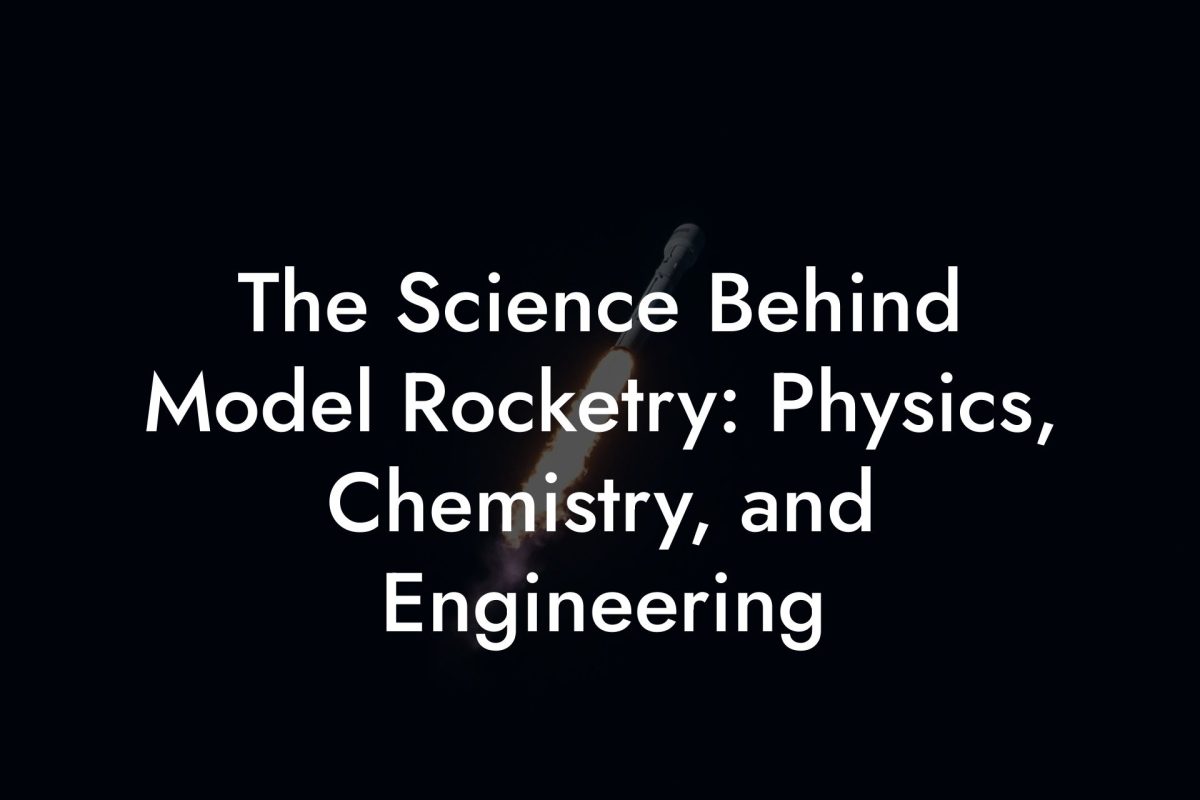Model rocketry isn’t just a hobby, it’s a powerful educational tool that ignites curiosity and inspires the next generation of scientists, engineers, and innovators. "STEM and Model Rockets: Inspiring the Next Generation of Scientists" explores how these high-flying projects integrate science, technology, engineering, and mathematics into a hands-on, engaging experience that can spark lifelong passion and curiosity.
Quick Links to Useful Sections
- Introduction: Launching Curiosity into the STEM Universe
- Bridging Theory and Practice
- Engaging Educational Programs and Workshops
- Inspiring Stories: From Classroom Projects to Career Launches
- Student Innovators
- Educator Success
- Career Launches
- Community and Mentorship: Nurturing Future Scientists
- Model Rocketry FAQs: STEM and Education
- Your Next Launch: Ignite Curiosity, Inspire Innovation, and Fuel the Future of STEM
Introduction: Launching Curiosity into the STEM Universe
Model rockets offer more than just a thrilling flight, they provide a dynamic platform for learning and experimentation in STEM fields. By building, launching, and analyzing rockets, students gain practical insights into fundamental scientific principles. From understanding the forces of physics to exploring chemical reactions in propulsion, every launch is an opportunity to learn by doing.
This guide explores how model rocketry can be used to inspire young minds, highlighting its role in STEM education, the benefits of hands-on learning, and real-world success stories that demonstrate how rocketry can lead to innovative breakthroughs.
Bridging Theory and Practice
In traditional classrooms, lessons in physics, chemistry, and engineering can sometimes feel abstract. Model rocketry bridges this gap by transforming theory into tangible experiences:
- Physics in Action: Concepts like Newton’s laws of motion and aerodynamics come to life as students observe how rockets overcome gravity and navigate through the air.
- Chemistry at Work: The combustion process and fuel mixtures provide a hands-on lesson in chemical reactions and energy conversion.
- Engineering Challenges: Designing and constructing a rocket requires problem-solving, precision, and creativity, embodying the very essence of engineering.
These practical applications not only reinforce classroom learning but also spark an interest in STEM subjects that can last a lifetime.
Looking For The Best Model Rocket Kits? You'll Love These:
Engaging Educational Programs and Workshops
Across the country, schools, museums, and local rocketry clubs are incorporating model rockets into their STEM programs. Hands-on workshops and competitions provide an interactive environment where students can:
- Build and Test: Engage in team projects where they design, build, and launch their own rockets, learning about every phase of the process.
- Analyze and Improve: Use data loggers and digital telemetry to record flight performance, encouraging analytical thinking and iterative design improvements.
- Collaborate and Compete: Participate in friendly competitions that promote teamwork, critical thinking, and innovation.
These educational initiatives not only enhance STEM learning but also build confidence and inspire students to pursue careers in science and technology.
Inspiring Stories: From Classroom Projects to Career Launches
Real-life stories illustrate the transformative impact of model rocketry in STEM education:
Student Innovators
Across schools, students have used model rockets as a springboard for innovative projects, developing custom sensors, designing efficient propulsion systems, and even winning national competitions. These projects demonstrate how hands-on rocketry can inspire innovative thinking and problem-solving.
Educator Success
Teachers who integrate rocketry into their STEM curriculum report higher engagement and enthusiasm among students. By turning theoretical lessons into exciting, real-world experiments, educators are able to spark a genuine passion for science and technology.
Career Launches
Many professionals in aerospace and engineering cite their early experiences with model rocketry as the inspiration behind their career choices. The hands-on experience and collaborative environment provided by rocketry clubs and competitions have set the stage for future innovation.
Community and Mentorship: Nurturing Future Scientists
Beyond the classroom, local rocketry clubs and online communities play a vital role in mentoring young enthusiasts. These communities provide:
- Expert Guidance: Seasoned rocketeers share tips and techniques, offering mentorship that helps beginners navigate challenges.
- Collaboration: Working together on projects fosters teamwork and exposes students to diverse perspectives and ideas.
- Inspiration: Seeing the passion and creativity of experienced enthusiasts motivates students to dream big and pursue their scientific interests.
By connecting with these communities, young rocketeers gain the support and resources needed to explore STEM fields further.
Model Rocketry FAQs: STEM and Education
Here are some frequently asked questions to help you understand how model rocketry can inspire and educate:
1. How does model rocketry integrate with STEM education?
Model rocketry applies physics, chemistry, and engineering principles in a practical, hands-on way that reinforces classroom learning.
2. What are the benefits of using model rockets in the classroom?
They provide a tangible, interactive learning experience that increases engagement, promotes critical thinking, and fosters teamwork.
3. Can model rocketry inspire students to pursue STEM careers?
Absolutely. Many rocketeers and professionals in aerospace and engineering attribute their career choices to early experiences with model rocketry.
4. What types of projects can students undertake with model rockets?
Students can design and build rockets, experiment with propulsion systems, analyze flight data, and even develop custom digital tools for telemetry.
5. Are there competitions and workshops tailored for students?
Yes, many local and national competitions, as well as workshops and summer camps, are designed specifically for students to learn and compete in a supportive environment.
6. How do rocketry clubs support STEM education?
Clubs offer mentorship, hands-on training, and collaborative projects that provide practical experience and foster a deeper understanding of STEM concepts.
7. Can model rocketry be integrated into existing school curricula?
Definitely. Many educators use rocketry projects to teach scientific principles and problem-solving skills, making them a valuable addition to any STEM curriculum.
8. What role does digital technology play in modern rocketry education?
Digital tools such as CAD software, simulation programs, and telemetry systems allow students to design, test, and analyze rockets, bridging the gap between theory and practice.
9. How can parents and communities support young rocketeers?
Parents and community members can support by encouraging participation in clubs, attending events, and providing resources for educational workshops.
10. Where can I find more resources on STEM and model rocketry?
Online forums, educational websites, rocketry clubs, and local STEM organizations offer a wealth of resources to help guide students and educators.
Your Next Launch: Ignite Curiosity, Inspire Innovation, and Fuel the Future of STEM
Model rocketry is more than just launching rockets, it’s about igniting curiosity, fostering innovation, and inspiring the next generation of scientists and engineers. Embrace the hands-on learning, immerse yourself in the community, and let every launch be a lesson in discovery. With the power of model rockets, you can transform theoretical STEM concepts into real-world achievements.
So, gear up, launch your imagination, and watch as your passion for science and technology takes flight. The future is bright, and it starts with you!
Looking For The Best Model Rocket Kits? You'll Love These:
Useful Interruption: Dive deeper into the world of Model Rockets with our most popular sections. If there is anything you think is missing or anything you would love for us to write about, just give us a shout.
- Getting Started & Basics With Model Rockets
- Model Rocket Design, Build & Customization
- Model Rocket Propulsion & Engine Technology
- Model Rocket Launch Techniques & Recovery
- Model Rocket Advanced Rocketry & Innovations
- Model Rocket DIY and Customization
- Model Rocket Equipment Reviews & Digital Tools
- Community, Competitions & Education
- Model Rocket Troubleshooting & FAQs
- Model Rocket Bonus/Seasonal & Niche Topics
A group of model rocket enthusiasts gathered at a field for their weekly launch event. Among them was Dave, a seasoned builder known for pushing the limits of hobby rocketry. This time, he had outdone himself.
“Ladies and gentlemen,” Dave announced, dramatically pulling a cloth off his latest creation, “I present to you: The Kraken!”
The crowd gasped. This wasn’t just a model rocket, it was a monster. The thing stood 8 feet tall, had six clustered engines, and was covered in enough duct tape to qualify as a classified aerospace project.
“Dave,” muttered Steve, the cautious safety officer, “Have you, uh… done the math on this?”
“Math?” Dave scoffed. “I built it in my garage at 3 a.m. with parts from eBay. This is an art piece, Steve.”
The countdown began.
5…
4…
3…
2…
1…
The engines ignited with a BOOM, and The Kraken shot up… kind of. It immediately did a violent barrel roll, narrowly missing the spectators before skyrocketing at an angle that could only be described as “legally questionable.”
The crowd collectively ducked as The Kraken flew straight over the adjacent cornfield, where Old Man Jenkins, the grumpiest farmer in town, was minding his business.
KABOOM!
The rocket disappeared behind the barn. A moment later, a flaming piece of Estes igniter wire landed at Steve’s feet. The silence was deafening.
And then, an unmistakable sound echoed across the field.
Jenkins’ shotgun being cocked.
“DAVE!!!” Steve shouted. “RUN.”
And that was the day Dave invented the first-ever biologically powered rocket booster: pure adrenaline.
To this day, nobody knows where The Kraken landed, but legend has it, it still haunts the skies, terrifying unsuspecting drones and low-flying birds.










